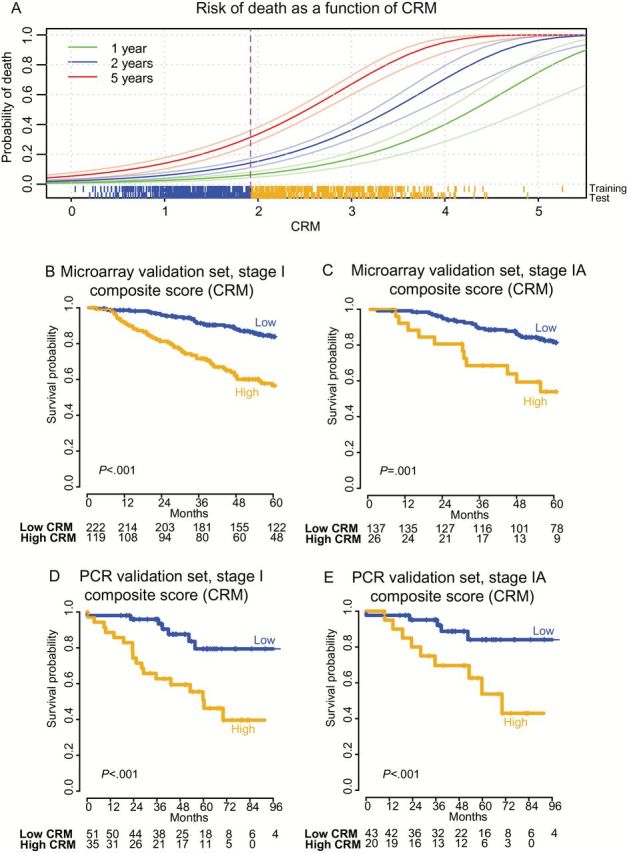Figure 4.

A composite risk model (CRM) incorporating molecular and clinical risk factors predicts risk of death from stage I nonsquamous non–small cell lung cancer (NSCLC). A) Distribution of the CRM and its relationship to survival in the training set, with survival modeled as a continuous function of the score. Data for CRM are presented as described for MPI in Figure 3, using the corresponding CRM threshold in the microarray training set (median CRM = 1.92). The scale of the CRM was adjusted to range from 0 to 5 to simplify interpretation in the clinical setting. B and C) Kaplan-Meier analysis of overall survival in the meta-cohort microarray validation set with stratification of risk groups based on the median value of the CRM defined in the training set. D and E) Kaplan-Meier survival analysis of the quantitative polymerase chain reaction validation set with risk groups defined by the median CRM value in the training set. P values for the CRM were calculated by log-rank test (two-sided). Numbers at risk are indicated below axes, and tick marks on curves indicate censoring. CRM = composite risk model; PCR = polymerase chain reaction.
